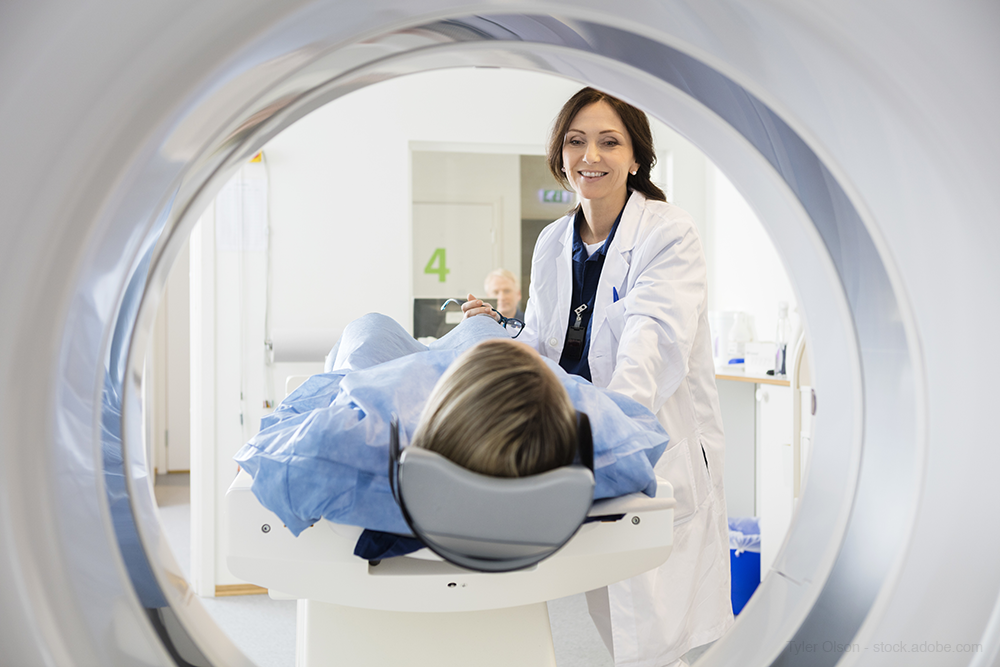Medical Imaging Trends in the U.S.

The growth rate of medical imaging slowed in the early 2000s, but it ticked back up in recent years for computerized tomography (CT) and magnetic resonance imaging (MRI) in most patient age groups in the U.S. and Ontario, Canada. A notable exception was a decline in CT use in children in recent years.
These are the findings of a study of more than 135 million imaging exams conducted by researchers at UC Davis, UC San Francisco, and Kaiser Permanente. Results were published September 3 in the Journal of the American Medical Association and are cause for concern for researchers because medical imaging is believed to be overused.
CT scans use ionizing radiation to create images of the inside of the body, and they deliver a radiation dose far higher than a conventional X-ray, while MRIs use magnetic fields and radio waves to create images and do not expose patients to ionizing radiation. The authors noted that the study does not address whether the documented imaging use was appropriate or associated with better patient outcomes.
“Medical imaging is an important part of healthcare and contributes to accurate disease diagnosis and treatment, but it also can lead to patient harms such as incidental findings, over-diagnosis, anxiety and radiation exposure that is associated with an increased risk of cancer,” says lead author Rebecca Smith-Bindman, MD, a UCSF professor of radiology, epidemiology, and biostatistics, and obstetrics and reproductive medicine.
“Like all aspects of medicine, it’s important to make sure imaging is justified, and that the potential benefits are balanced against the potential harms,” says Smith-Bindman, a member of the Philip R. Lee Institute of Health Policy Studies. “These potential harms of false positive diagnoses and over-diagnoses can impact everyone who undergoes a test and thus need to be considered when imaging is used.”
Diana Miglioretti, PhD, biostatistics professor at UC Davis Department of Public Health Sciences and senior author on the study, says there were some hopeful signs among the findings.
Related: How Enterprise Imaging Technology is Changing Healthcare
“The good news is that rates of CT imaging are starting to come down in children,” says Miglioretti, who is also a senior investigator with Kaiser Permanente Washington Health Research Institute. “However, they’re still far lower in Ontario than in the U.S., suggesting there is additional room for improvement. It’s also important to reduce unnecessary imaging in adults given they are also at risk of radiation-induced cancers.”
The authors note that potential overuse of diagnostic testing has been addressed with the “Choosing Wisely” campaign launched in 2012 by the American Board of Internal Medicine Foundation and endorsed by 85 professional medical societies. The effort urges physicians to talk with their patients about whether an imaging study is necessary, free from harm, and supported by evidence.
Other initiatives, including by CMS, have created incentives to discourage overuse of imaging by reducing reimbursement rates for certain scans.
The study authors say their findings suggest that neither the financial incentives nor the campaign to reduce use of medical imaging have been entirely effective.
“Although most physicians are aware that imaging tests are frequently overused, there are not enough evidenced-based guidelines that rely on a careful consideration of the evidence, including information on benefits and harms that can inform their testing decisions,” Smith-Bindman says. “In the absence of balanced evidence, the default decision is to image.”
In the Scope of Virtual Health and the Future of “Website” Manner, Per Ateev Mehrotra
August 10th 2023Briana Contreras, an editor of Managed Healthcare Executive, had the pleasure of catching up with MHE Editorial Advisory Board Member, Ateev Mehrotra, MD, MPH, who is a professor of healthcare policy at Harvard Medical School and an Associate Professor of Medicine and Hospitalist at Beth Israel Deaconess Medical Center.
Listen